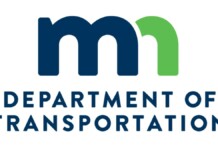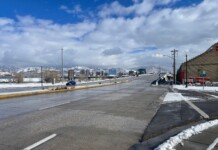All the states in the Mountain and West Regions need to greatly improve their investment in bicycling, if you believe the latest annual state rankings from the League of American Bicyclists (LAB).
Some are doing much better than others, though. What follows constitutes a summary of LAB’s latest analysis of where the states need to go.
- California scored first in the region and 3rd nationwide. It “seems to be getting serious about biking and walking,” LAB says. California is adopting a statewide bicycle and pedestrian plan and “has long led in many aspects of bicycle culture and has the highest number of bicycle commuters of any state. With a state (department of transportation) that is increasingly committed to ensuring the safety and comfort of people who bike rather than maintaining a status quo, the state seems on the verge of establishing new standards and practices that will be a model for other states…” But LAB doesn’t like California’s mandatory bike lane law, which generally requires cyclists to use a bike lane when present (California Vehicle Code 21208), because such laws don’t consider the quality of the lanes. And the state needs better data on existing facilities.
- Colorado did 2nd best in the Mountain region and ranked 6th in the nation, as the state has picked up on LAB’s efforts, with 110 LAB-designated bicycle friendly businesses, 22 bicycle friendly communities and seven bicycle friendly universities. But LAB found room for improvement, noting that the state hasn’t significantly increased funding for bicycling and spends less per capita than most states. The state should appoint a bike coordinator for each region and insure that cyclists are included in every bridge/tunnel project.
- Utah scored 3rd best regionally and eighth in the nation. But despite its high ranking, LAB severely criticized the state because “Utah’s federal spending on bicycling and walking is conspicuously low.” The state also scored poorly for use of its own money, as the Utah Dept. of Transportation’s “staffing levels are well below leading states such as Washington and Minnesota.” The state also needs to improve its driver’s education to teach motorists about interactions with bicyclists.
- It’s a long way down to Arizona, which scored 21st. While many Arizonans bike to work, the state suffers from a high casualty rate. And with no complete streets policy or up-to-date performance measures, “there does not appear to be a consistent push for the safe inclusion of bicyclists in Arizona’s transportation system.” The Arizona Dept. of Transportation also doesn’t guarantee that federal money intended for biking and walking gets spent for them.
- Idaho ranked 28th. LAB referred to a “state Department of Transportation and legislature more concerned with travel or freight movement between communities than the benefits of bicycling within or between them.” But Idahoans are forging ahead despite a lack of government support. “Idaho spends the fifth least per capita of federal funds on biking and walking of any state despite having a high percentage of commuters who bike and walk to work. Idaho needs to create internal processes that ensure that bicycle and pedestrian projects can be regularly delivered with federal funds to address the needs of people who bike and walk and prevent the revocation of funding authority.”
- Nevada crossed the finish line in 31st place. The Silver State even lacks a statewide advocacy group. The state recently passed a complete streets policy but it’s too early to say if it’s working. The state faces special challenges as the federal government owns most of the real estate and communities generally are rural and spread out. The state needs to educate planners and engineers on bicyclists’ needs.
- As we get deeper into Hall of Shame territory, Wyoming ranked 42nd. Wyoming cyclists suffer from “the lowest category scores in the nation for both LAB’s Policies & Programs and Evaluation & Planning” criteria. The state also doesn’t do much to promote bicycle tourism or transportation. The state is rapidly crashing as it ranked 11th as late as 2009. The state created a Bicycle & Pedestrian System Task Force, which is still trying to come up with something. But the state needs a complete streets policy.
- New Mexico did worse, at 44th. But unlike Wyoming, it has always been near the cellar, never scoring higher than 40th. It did take some steps last year toward complete streets policy and a Statewide Prioritized Bicycle Network Plan, but LAB found “a lack of design and access policies that ensure that bicyclists are considered during the course of all roadway projects and that appropriate design guidance and training exists.” LAB also wants New Mexico to adopt laws to protect cyclists, such as a three-foot passing requirement and increased penalties for killing or injuring a cyclist.
- Montana did worst in the region, at 45. Though some communities are doing very well, the state government’s not doing much when it could encourage cycling between communities or promote bicycle tourism. It also lacks adequate roadway safety laws and even a statewide bicycle advisory committee.
For the record, Washington state scored 1st, Oregon 5th, and Nebraska last. Only the states were ranked, so the District of Columbia, Puerto Rico, etc. got a pass. You can read all LAB’s latest state reports at bikeleague.org/content/state-report-cards












